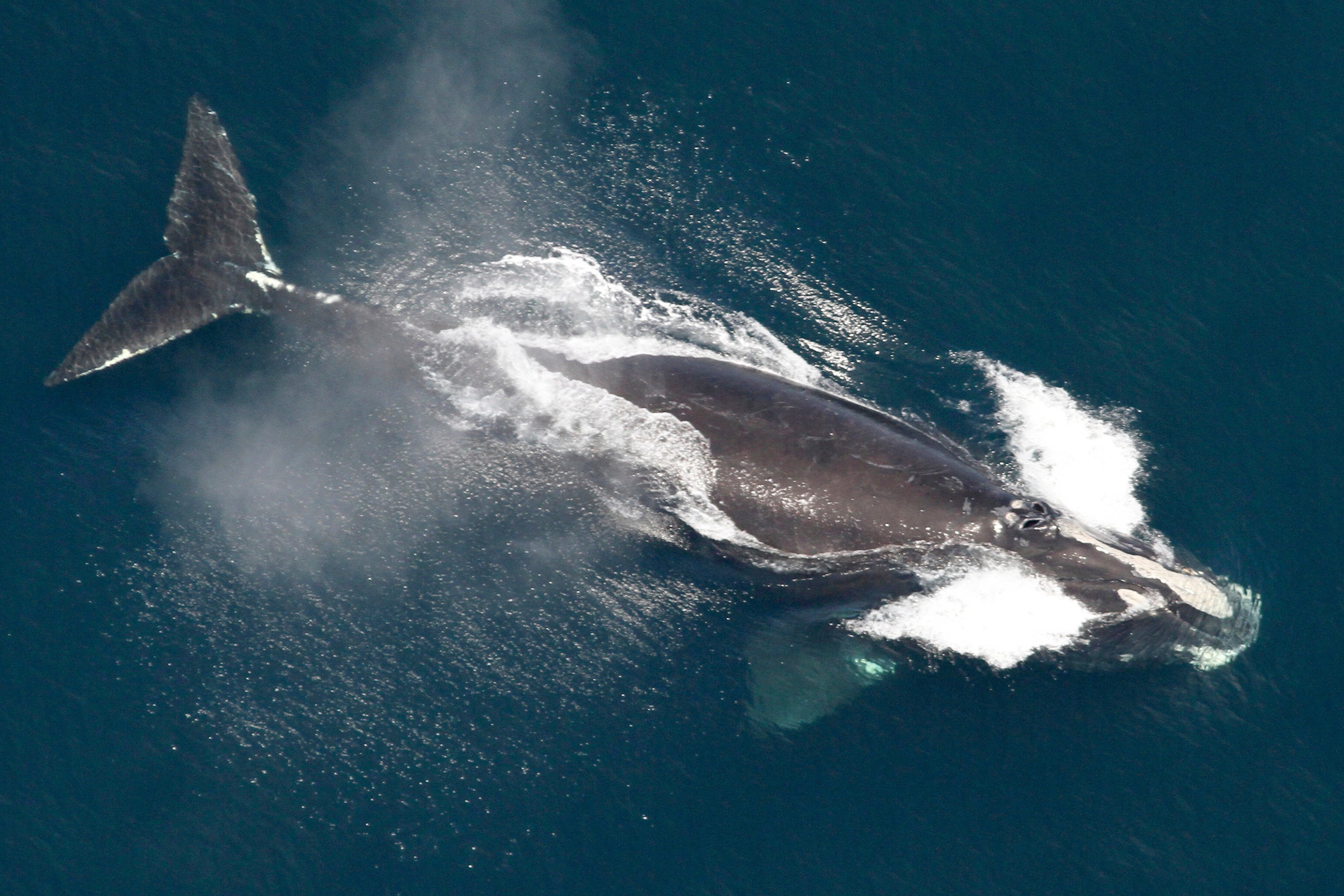One of the world’s rarest whale species, the North Atlantic right whale, is showing an encouraging trend of population growth following renewed conservation efforts, scientists have reported.
The species now stands at an estimated 384 individuals, an increase of eight from the previous year, according to a report released on Tuesday by the North Atlantic Right Whale Consortium. This marks a continuation of slow but steady growth observed over the last four years.
The positive development comes after a troubling decline throughout the preceding decade. The species, highly vulnerable to ship collisions and entanglement in fishing gear, saw its numbers plummet by approximately 25 per cent between 2010 and 2020.
Philip Hamilton, a senior scientist at the New England Aquarium’s Anderson Cabot Center for Ocean Life, stated that the recovery trend is “a testament to the importance of conservation measures.” The population estimate is a collaborative effort between the centre and the National Oceanic and Atmospheric Administration (NOAA).
New management measures in Canada that attempt to keep the whales safe amid their increased presence in the Gulf of St. Lawrence have been especially important, Hamilton said.

“We know that a modest increase every year, if we can sustain it, will lead to population growth,” Hamilton said. “It’s just whether or not we can sustain it.”
Scientists have cautioned in recent years that the whale’s slow recovery is happening at a time when the giant animals still face threats from accidental deaths, and that stronger conservation measures are needed. But there are also reasons to believe the whales are turning a corner in terms of low reproduction numbers, Hamilton said.
The whales are less likely to reproduce when they have suffered injuries or are underfed, scientists have said. That has emerged as a problem for the whale because they aren’t producing enough babies to sustain their population, they’ve said.
However, this year four mother whales had calves for the first time, Hamilton said. And some other, established mother whales had shorter intervals between calves, he said.
In total, 11 calves were born, which is less than researchers had hoped for, but the entry of new females into the reproductive pool is encouraging, Hamilton said.
And any number of calves is helpful in a year of no mortalities, said Heather Pettis, who leads the right whale research program at Cabot Center and chairs the North Atlantic Right Whale Consortium.
“The slight increase in the population estimate, coupled with no detected mortalities and fewer detected injuries than in the last several years, leaves us cautiously optimistic about the future of North Atlantic right whales,” Pettis said. ”What we’ve seen before is this population can turn on a dime.”
The whales were hunted to the brink of extinction during the era of commercial whaling. They have been federally protected for decades.
The whales migrate every year from calving grounds off Florida and Georgia to feeding grounds off New England and Canada. Some scientists have said the warming of the ocean has made that journey more dangerous because the whales have had to stray from established protected areas in search of food.



